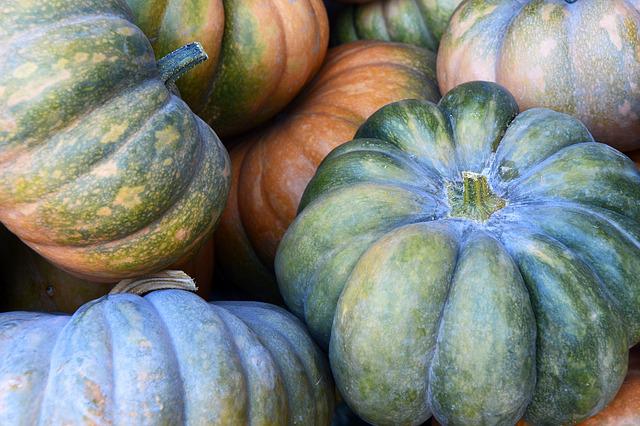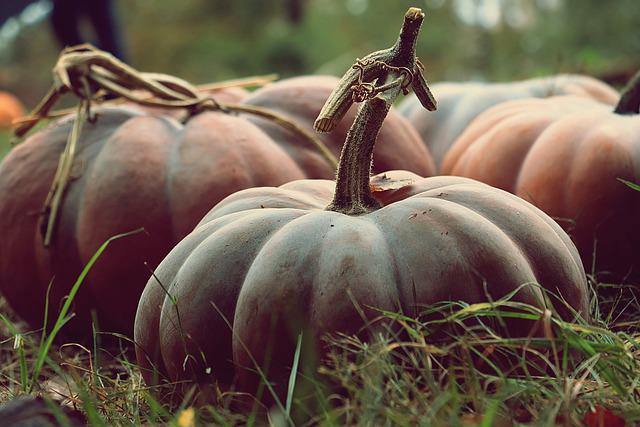Do Pumpkins Start As Green? How Long Does a Pumpkin Take Before It’s Ready to Harvest?

If you’ve never grown pumpkins before, you might not know their color. Is it normal for pumpkins to be green when they first come out?
The pumpkin fruit will start as a pale green color and will ripen to the final color, which will vary depending on the variety you’re growing. Some varieties produce a bright orange skin, while others produce a grey-green color or even a dark cream color, which is quite different from the fruit’s initial appearance.
Table of Contents
Pumpkin Growing Stage
Typically, the fruit will be quite small when it first appears. If you’re paying attention, you’ll notice it when it’s about the size of a marble.
This appearance will typically last until the pumpkin reaches full size, which will vary greatly depending on the variety grown. Once the plant has grown to full size, it will take some time before you notice the characteristic color changes that indicate the fruit is starting to ripen.
You’ll also notice that the color development is a little uneven, with the sections of the pumpkin closest to the ground being a little paler. This is usually not a cause for concern and has no bearing on the pumpkin’s quality or flavor.
Allow the leaves to die back completely, leaving only the fruit on the ground attached to dried-up stems to ensure that the pumpkin is completely ripe. You can be certain that the pumpkin is fully ripe at this point.
What Causes Your Pumpkins To Retain Their Green Color?
Pumpkins that are still green on the outside are immature pumpkins still growing on the vine. During their growth, it is natural for them to have this coloration. On the other hand, they have not yet turned orange, indicating that something is not right.
You could be forgiven for wondering why your green pumpkins have not yet changed color! There are a few possible explanations for why something like this would occur:
- If you planted your pumpkin seeds too late for a late autumn harvest, there is a chance that unfavorable weather conditions will arrive before your pumpkins are ready to be harvested.
- A late-night or early-morning frost is extremely detrimental to the growth of pumpkins, both in the beginning and the later stages of the plant’s development. If your pumpkins are still green even though nighttime temperatures are beginning to drop and frost is beginning to form, you should remove the pumpkins from the vine as soon as possible.
- If you keep them outside in temperatures that are consistently below freezing and deny them exposure to sunlight, they will retain their green color indefinitely. There is also a possibility that they will rot and wither away, ending your wonderful pumpkin harvest. If this occurs, the pumpkins will not be usable.
- Even if the weather is beautiful, if your pumpkins are still green and showing no sign of turning orange, there is a possibility that they are suffering from powdery mildew or another type of infection.
- You should regularly inspect the leaves and vines of your pumpkin plant so that something like this does not occur. You need to treat the fungal problem with some anti-fungal remedies as soon as you notice any sign of this happening.
Is It Possible To Eat Green Pumpkins?
Green pumpkin, like many other unripe fruits, can be eaten raw. Even after cooking, the flavor will be very different from an orange ripe pumpkin. It’s not recommended to eat any part of a green pumpkin that looks rotting or has mold on it.
It’s worth noting that there is a green squash that resembles a pumpkin and can be eaten. Kabocha is the name given to it. You can eat a lot of pumpkin parts. Pumpkin flowers are edible and taste great when fried.
How To Make Green Pumpkins Turn Orange

1. Harvest Your Pumpkin
Leave at least four inches (10 centimeters) of the vine attached to the top of the pumpkin after removing it from the vine. The “handle” will prevent the top of the pumpkin from rotting.
2. Wash Your Green Pumpkin
Rot and mold pose the greatest threat to green pumpkins. Wash the pumpkin gently to remove any mud and dirt. After cleaning the pumpkin, dry it and then wipe it down with a bleach solution that has been diluted.
3. Locate a Warm, Dry, and Sunny Spot
To ripen, pumpkins require sunlight and warmth and a dry location to prevent rot and mold. Enclosed porches are ideal, but any warm, dry, and sunny spot in your yard or home will suffice.
4. Expose Your Pumpkin to the Sun
During the day, the Sun’s rays will aid in the pumpkin’s green portion turning orange. Pumpkins that are partially green should face the Sun to get the most out of their harvest. Rotate the pumpkin to ensure an even change from green to orange if it is completely green.
